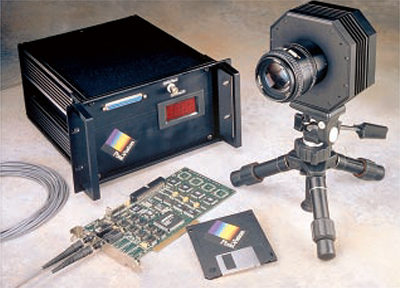Pixel Paradise
Everyone has been impressed by those sharp images relayed to Earth over billions of miles, courtesy of outbound spacecraft as they reach other worlds. Each picture element of an image sent back from spacecraft is known as a pixel.
If PixelVision, Beaverton, Oregon, has its way, you haven't seen anything yet! Scientists at the Jet Propulsion Laboratory (JPL) and PixelVision engineers have developed active-pixel technology with noise performance on a par with Charge Coupled Device (CCD) detectors. While CCDs provide impressive sensitivity, dynamic range, and linear response, readout speeds of CCD images have lagged. That fact has imposed performance limitations on large-array cameras.
JPL researchers, aided by PixelVision, had a challenge on their hands. A NASA mission to faraway Pluto is on the books. The long journey will surely tax technology to the max, including the need for a high-sensitivity Pluto imager.
The answer came through development of an active-pixel sensor that uses very large scale integration, incorporating all necessary camera functions onto a single chip. Each pixel contains not only the photodetector element, but also active transistor circuitry for reading the pixel signal. Unlike CCDs, which need to add circuitry to prevent light distortion, the active-pixel sensor is intrinsically not prone to electrical charge leaking from one pixel to another when exposed to intense light.
JPL's goal for Pluto was a video-rate read noise of less than five electrons, a level of performance previously available only in slow-scan scientific cameras. The end result from JPL engineers and PixelVision researchers was a high-speed, video-rate CCD camera that retains resolution and has an impressive readout speed of 30 million pixels per second. The instrument has been labeled a high-speed imaging engine.
Fabrication of the Pluto CCDs required submicron precision across the entire semiconductor wafer, several inches in diameter. That requirement pushed semiconductor processing technology close to its current limits. State-of-the-art technology was also needed to avoid image smearing, given the high readout speed of the camera.
Subsequent to the development of the high-speed imaging engine for Pluto, PixelVision has begun to address various applications of the technology.
According to George Williams, Vice President and General Manger of PixelVision, the high-speed imaging engine is ideal for applications that require video-rate imaging for real-time monitoring of dynamic events. One example, Williams says, is fluorescence imaging of energetic events in cell biology. Still other uses for the technology fall into enhanced night vision for military and surveillance purposes. The Pluto imager yields a robust night vision capability. Moreover, it does so at far lower power levels than vacuum tube designs that are part of airborne visible night vision systems in wide use today.
The imager is also well suited to applications that require high speed simply to handle a large volume of image data, such as three-dimensional reconstruction microscopy and film digitization. Increased CCD speed and ease of integration will both be important benefits to manufacturers and end users of reconstruction microscopes, Williams says.

CCD camera offers sensitivity of slow-scan scientific camera with extremely fast readout. Built for a mission to Pluto, the device supports several commercial applications, such as night vision surveillance.













